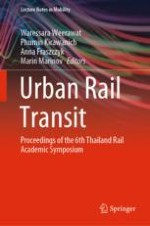These proceedings gather a selection of peer-reviewed papers presented at the 6th Thailand Rail Academic Symposium (TRAS 2019), held at Mahidol University, Bangkok, Thailand on 21–22 November 2019. The focus is on presenting recent research on issues related to rail and metro, with a specific focus on metro performance and system design undertaken in Thailand, South East Asia and beyond. Topics presented are divided into three themes and cover issues related to: Metro operations and system performance
Rail engineering and vehicles
Rail education and training
